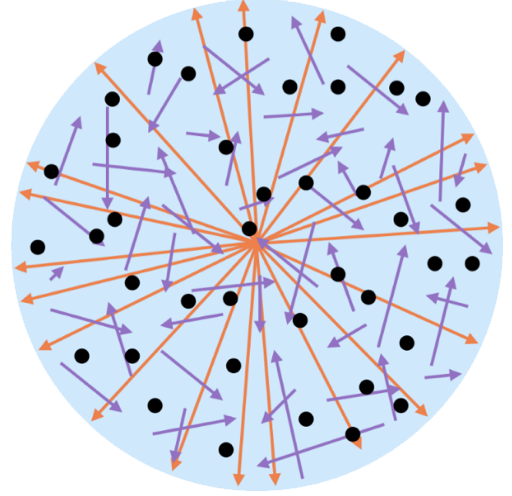Molecular underpinnings of cytoskeletal crosstalk
Angela Oberhofer*, Emanuel Reithmann*, Peter Spieler, Willi L. Stepp, Dennis Zimmermann, Bettina Schmid, Erwin Frey+, Zeynep Ökten+
 Research questions
Research questions
The goal of this project was to identify basic mechanisms that govern the cell-wide redistribution of pigment-organelles from the biomolecular level up to the level of collective dynamics. In this respect, we asked: What biomolecluar changes of the motor proteins that move pigment organelles are responsible for a dynamic redistribution of pigment organelles? Can we use computational modeling to connect these biomolecular changes to a cell-wide dynamic reorganization of pigment organelles as observed in vivo? Are there regulatory principles that might have constrained an evolutionary pathway of biomolecular changes observed from early to lower vertebrates?
Key findings and their relevance
A transfer of pigment organelles between actin filaments and microtubules as measured in vitro reconstitutes to a cell-wide redistribution of pigment organelles in silico. The experimental results from our collaboration partners revealed that signaling factors that drive a dynamic redistribution of pigment organelles in vivo are related to a change in the probability at which single motor proteins that move the organelles switch from actin to microtubule filaments. We used computational modeling to relate this measurement of the switching probabilities of an individual motor protein to the cell-wide organization of pigment organelles in a virtual cell. Strikingly, the sole change of the probability of an organelle to switch from actin filaments to microtubules sufficed to reconstitute a cell-wide redistribution of the pigment organelles in silico.
The global redistribution of pigment organelles is regulated efficiently and robustly by a modulation of the cytoskeletal crosstalk as measured in vitro. Our theoretical approach further allowed us to assess the efficiency of the regulatory mechanism uncovered in the experiments. This supported that a regulation of the intracellular organization of pigment organelles is not just possible due to change of the switching probabilities described above, but that a regulation is particularly robust and efficient for the switching probabilities quantified in vitro.
In silico modeling identifies potential evolutionary pathways that might have governed the regulation of the cell-wide distribution of organelles. Finally, our methods identified potential evolutionary pathways: Our experimental collaborators unraveled that the motor proteins which move pigment organelles in early vertebrates (fish) are subject to different regulatory mechanisms than those in lower vertebrates (amphibians). Our theoretical analysis provides a rationale for the observed changes: The experimentally measured evolution of the switching probabilities of molecular motors of fish to that of amphibians strongly correlated with changes of parameters that had a strong impact on the cell-wide distribution of organelles in our simulations.

